10 Weight Loss Foods I Buy Every Week, as a Nutritionist
Autumn Bates (@autumbates) is a Clinical Nutritionist who has a Master's in Nutrition Human Performance and a social media influencer with hundreds of thousands of followers. Her videos, which focus on healthy eating, weight loss, and intermittent fasting, regularly go viral – including one recent segment where she reveals ten foods that help her lose weight. "Today, I'm sharing ten foods I buy every week as a nutritionist," she says. "To date, I've currently hit my weight loss and fat loss goals, and it's largely due to these foods that I've been eating a lot of."
Eggs
"The first thing that I've been buying every single week are eggs," Autumn reveals, adding that she buys "a lot of eggs" because she eats a lot of eggs. "Eggs are a great source of protein to help with the body recomposition goal, but they're also so satiating and especially when you're on a weight loss or a wellness journey, it's so much easier to achieve that and to maintain it when you're not hungry," she adds. "I make scrambled eggs with bacon or I have eggs in my protein waffles. Either way, we go through a lot of eggs. We probably go through about at least 24 if not 36 eggs per week between myself and my husband." Research agrees that consuming more protein can help reduce body weight (BW) and also enhances body composition by decreasing fat mass while preserving fat-free mass (FFM) in both low-calorie and standard-calorie diets.
Cottage Cheese
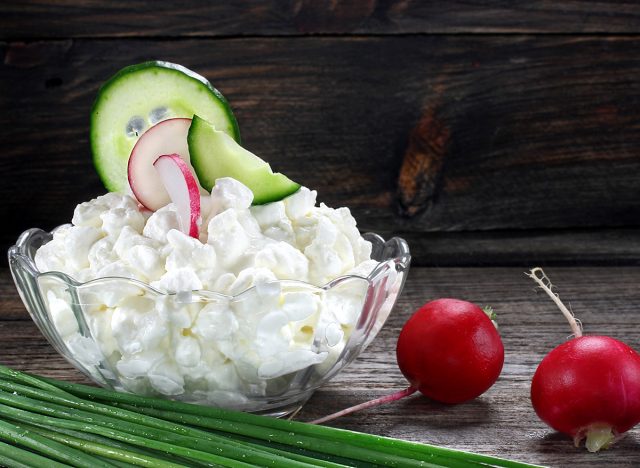
The second thing Autumn buys every single week is cottage cheese. "Now, cottage cheese is forever a favorite meal item for me because it's super fast, it's super easy, it requires zero cooking, and it's actually really high in protein," she points out. "I often use cottage cheese for either my breakfast, because I'm using intermittent fasting, or my lunch." She explains that she will get a large container of cottage cheese and scoop out half, "which equates to about 28, 30 ish grams of protein." She then adds "some nuts or almond butter and some type of fruit" for the perfect meals. "Literally takes minutes to put together, so easy," she says about the "no cook" meal. She opts for the full fat version of cottage cheese, which "is because the fat combined with the protein in cottage cheese really helps to raise satiety and helps prevent hunger and cravings so much more so than just regular low fat options" because "both fat and protein raise our satiety hormones." Are you afraid of buying full-fat dairy products? Don't be. Science supports Autumn's claims that higher fat dairy promotes satiety. There are also studies that it may even protect against heart disease and lower the risk of stroke.
Related: Autumn Calabrese Shows Off Washboard Abs and Shares Tips On How to Stay "Fit Over 40"
Zero Sugar Dark Chocolate Chips
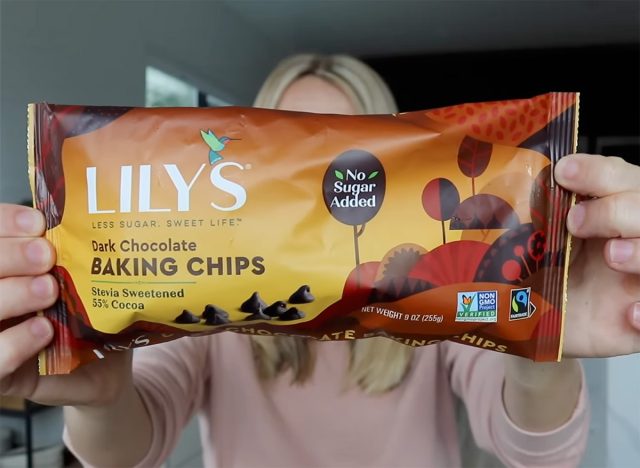
She also buys zero sugar dark chocolate chips, revealing that she makes chocolate chip protein waffles with them. "Trevor, my husband, and I make literally like 36 waffles each week. We batch them all at once and then store them in the freezer. So all we have to do is pop it in the toaster when we're ready to eat it and it's good to go. And we add in about a tablespoon of the zero sugar dark chocolate chips to each serving," she explains. "It's just a nice little fun treat and it doesn't have added sugar."
Apples
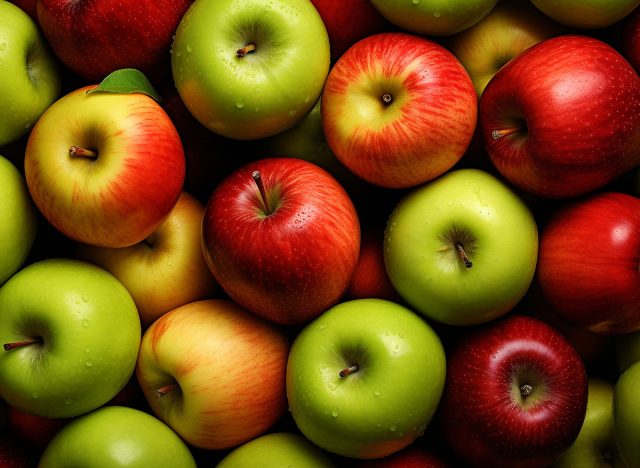
Apples, "specifically honey crisp apples," are next on her shopping list. "Now, this might sound like an odd addition because apples are going to be a little bit higher in sugar than some other fruits like raspberries or strawberries, but I've been really focusing on low glycemic load, which is a measurement of how much various foods have an actual impact on our blood sugar level," Autumn explains. "Apples are surprisingly low glycemic load, even though they do have a little bit higher of a sugar content. She has "one per day" and sometimes pairs with her cottage cheese bowl, to get "the additional protein and fat from the cottage cheese bowl, which then just helps to further lower the glycemic load of the overall meal."
Kale
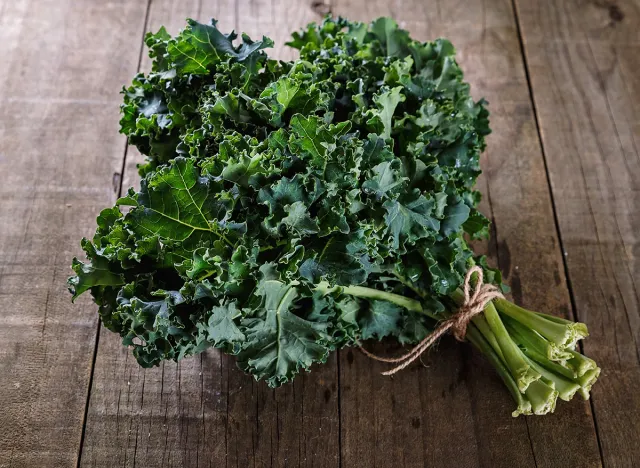
The fifth thing she's been "buying every single week" is kale. "I was off the kale bandwagon for a while, wasn't really craving it, but since it was the season for kale, it's like my taste buds just were wanting it again. And for the last three or four months, I've literally been obsessing over it," Autumn says. "I've been having kale in so many different forms like sauteed or baked, but mostly in this marinated kale salad that I've been making. Oh my gosh, it's so good. I take kale, marinate it with some Dijon mustard, olive oil, balsamic vinegar and salt, and then I top it with roasted fall veggies and onions and garlic and some grilled chicken. Oh my gosh, it's so simple. It's so good."
Siggi's Skyr
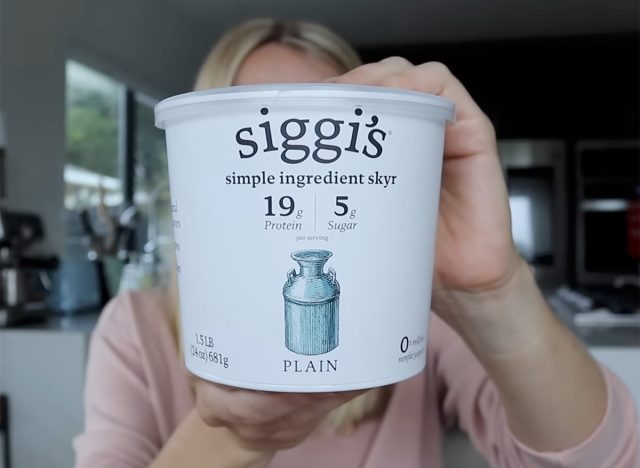
"The sixth thing I've been buying every single week is Siggi's simple ingredient skyr," says Autumn. She explains that she makes her own greek yogurt, but that the protein content in Siggi's is high. It's the only skyr option that also comes in full fat or whole milk. And just like with the cottage cheese, I make sure to go for the full fat option for satiety purposes, so I'm not hungry and craving sugar," she explains. She usually eats it on top of her protein waffles, "so I'm getting that extra hit of protein from my topping," she says.
Carrots
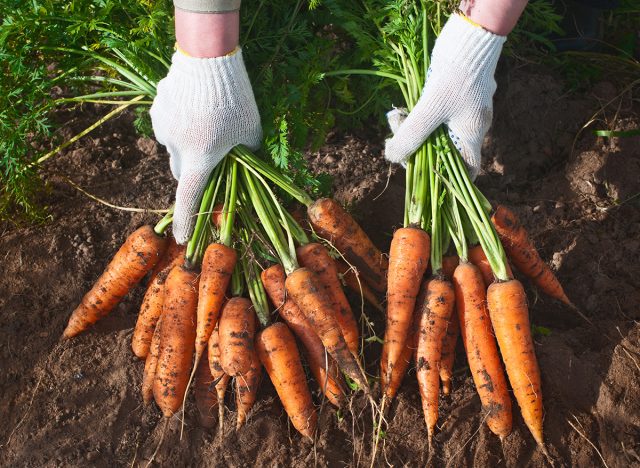
Carrots are another repeat veggie on her shopping list. She explains that while some people think the root veggie is high in sugar, "actually carrots are also very low glycemic load, which means it doesn't really have a big impact on blood sugar levels," she says, adding that they are a great alternative to sweet potato, a "more medium glycemic load." She often roasts them with "a little bit of cumin, maybe some paprika and ground garlic."
Related: 5 Ways to Look Better in Bed
Nut Pods
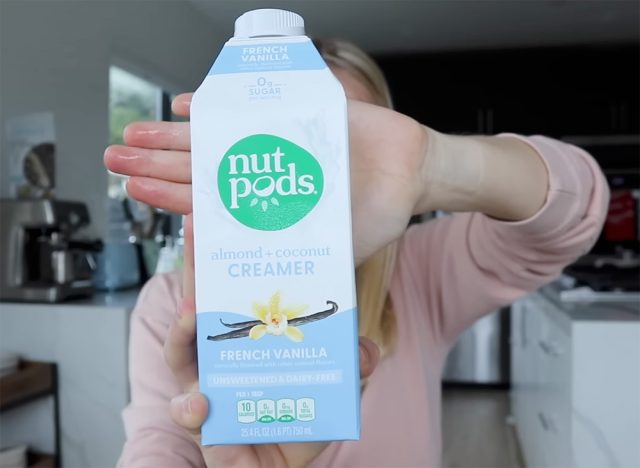
The eighth thing I've been having every single week are Nut Pods, a cream alternative that she adds to her coffee, "because it is a zero sugar coffee creamer that comes in some fun different flavors without sketchy ingredients." One of her go-tos is their vanilla flavor and also eggnog. "When you're on a weight loss journey, it's so important to actually eat foods that you enjoy and doesn't make you feel like you're missing out on life. Otherwise, it's really easy to go off track and eat foods that don't support your goals, especially during the holidays. That's where having something like Nut Pods where it adds in a little bit of flavor without having that added sugar was a really nice addition during my weight journey."
Broccoli and Cauliflower
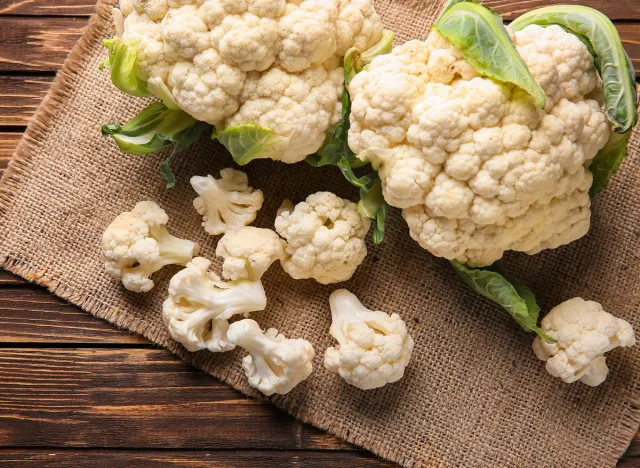
The ninth thing she buys weekly is broccoli and cauliflower. "Now, the reason why I buy each of these every single week is because I either have it raw in my Sunday salad or I'll chop it up, roast it, and have it in something like my kale salad that I mentioned earlier," she said, revealing a hack. "I'm not sure if you guys have tried this before, but if you take these stalks from broccoli and you just peel off that outer edge and you roast that up, that's honestly the best part about broccoli," she says. "Roasting up these fall veggies, adding on even just salt and olive oil, but sometimes adding on like that ground garlic ground onion is such an easy, delicious and simple side dish that's also low glycemic load."
Related: 13 Diet Tips That Help Firm Up Your Butt
Whole Milk
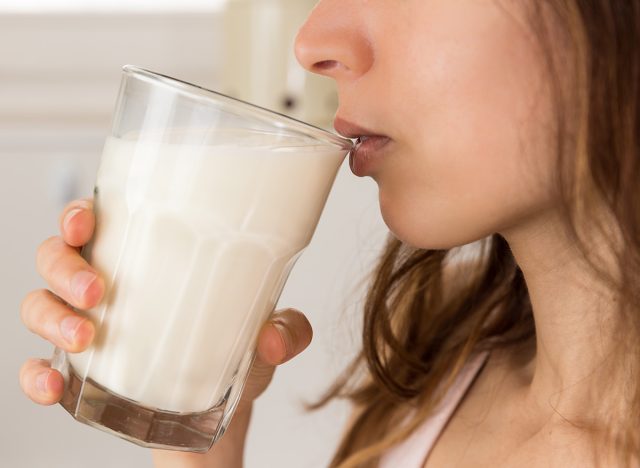
The 10th thing she's been buying every single week is whole milk. "Now, ironically, I actually don't have it right now because it is toward the end of the week and I ran out, but with the whole milk, I use that to make my zero added sugar protein hot chocolate with my chocolate protein powder," she explains. "This is my go-to treat when I feel like having something a little sweet during my weight loss journey because it has zero added sugar and provides 18 grams of complete protein. So especially on those days when maybe I was a little low on protein and I needed a little bump and I'm craving a little bit of sugar, this has been a game changer. I just combined the whole milk with a scoop of my zero sugar chocolate protein powder and a little bit of cocoa powder. Whisk that together, just heat it up to the temperature that I want and it."
💪🔥Body Booster: While weight loss culture once promoted the idea that fat-free foods were better for weight loss, these days most experts agree that opting for full-fat options are a better option, as they promote satiety and may even protect against heart disease and lower the risk of stroke.





